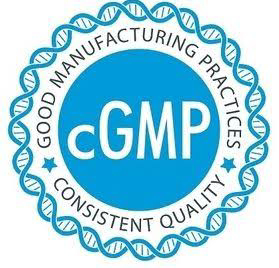➡️The unhygienic conditions in Chicago’s meat packing plants revealed in Upton Sinclair’s novel, “The Jungle”, allowed the government investigators and congress to enact the meat inspection law and the Pure Food and Drugs Act in 1906, the law forbade adulteration, misbranding adulteration, misbranding of foods, drinks, and drugs.
➡️Thirty years later the drug tragedy “elixir of sulfanilamide” which killed over 100 people, greatly dramatized to broaden the existing legislation. On June, 25th 1938 Franklin D. Roosevelt signed the Federal Food, Drug, and Cosmetic Act, it required manufacturers to provide scientific proof of drug safety before it could be marketed.
➡️All these events brought the current regulatory requirements for cleaning validation.
➡️Cleaning validation is primarily applicable to the cleaning of process manufacturing equipment in the pharmaceutical industry. The focus of cleaning validation is those cleaned surfaces that, if inadequately cleaned, could potentially contaminate the product subsequently manufactured in that same equipment.
➡️Cleaning validation is not performed only to satisfy regulatory authorities. The safety of patients is the primary objective. Also product contamination presents serious liability issues for any pharmaceutical manufacturer or contract organization.
Cleaning:
➡️Cleaning is defined as removal of residues and contaminants. The residues and contaminants can be the product or degradation product.
What is Cleaning Validation?
➡️Cleaning Validation is defined as Establishing documented evidence that the cleaning process consistently provides a high degree of assurance that after cleaning, equipment and system are free from materials that would contaminate or adulterate subsequent product up to the predetermine acceptance criteria.
Objective of Cleaning Validation?
- Remove product, disinfectant and microbial residue
- Prevent possible contamination and cross contamination.
Need for Cleaning validation ?
➡️To verify the effectiveness of cleaning procedures and to ensure no risks are associated with cross contamination of active ingredient or detergents.
Why cleaning validation is performed in three batches?
➡️Because first time satisfactory results came out due to accident, second time due to coincident and third time due to complete validation...
When or Why Cleaning validation?
- Initial qualification of a process/equipment
- Change in a cleaning process
- Critical change in formulation
- Change in a cleaning agent
- Significant change in equipment
- Repeated cleaning failures
There are mainly two sampling technique used..
1. Swab sampling:
➡️It usually requires materials which are insoluble, absorptive & to physically wipe the surface and recover the residue.
 |
| Different type of Swabs |
2. Rinse sampling:
➡️Mainly perform for water soluble and complex equipment where swabbing not accessible.
Sampling technique depends on product solubility as per following
- For soluble products:
- For Active ingredient residue (Rinse/Swab sample)
- For cleaning agent residue (Rinse sample)
- For Endotoxin testing (Rinse sample)
- For microbiological monitoring (Swab sample/Rinse sample (in case of complex equipment)
- For insoluble products:
- For Active ingredient residue (Swab sample)
- For cleaning agent residue (Rinse sample)
- For Endotoxin testing (Rinse sample)
- For microbiological monitoring (Swab sample/Rinse sample (in case of complex equipment)
Cleaning validation acceptance criteria:
1. Visual Cleanliness:
➡️No traces of the previous product shall be visible on the equipment surface after cleaning.
2. ADE approach based on ISPE risk MaPP:
- Determination of ADE
➡️ADE value have been calculated by approved toxicologist by below formula.
NOAEL x BW_
ADE = UFc x MF x PK
Where,
NOAEL= No Observed Adverse Effect Level,
BW= Body weight of patient taking next product (50 kg),
UFc= A composite uncertainty factor determined from intraspecies differences, interspecies differences, sub chronic to chronic extrapolation, LOAEL to NOAEL extrapolation, and database completeness,
MF= Modifying factor, a factor based on the judgement of the toxicologist,
PK= A pharmacokinetic factor to account for different routes of exposures,
- Determination of product MACO
ADE x SBS
MACO = LDD
Where,
ADE = Acceptable Daily Exposure (mg/day),
SBS = Smallest batch size of the drug product in the product group,
LDD = Largest daily dose of the drug product in the product group.
- Determination of final acceptance criteria
MACO × Swab Area
LS = TSA
Where, TSA = Total contact Surface Area (in sq. inch or sq. cm) of complete equipment train.
LS = Final acceptance criteria for Swab sample (in µg/swab).
Swab area=Test area.













Super!!
ReplyDelete